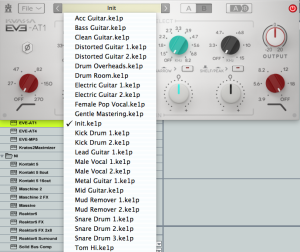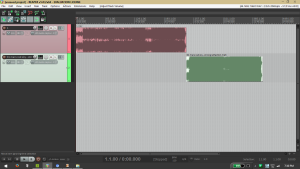This is the second part of the Kuassa mastering tutorial, discussing the second most important factor of mastering process: references, goals, and plugins. Along with the first part, are the essentials that often overlooked by (aspiring) mastering engineers. Read on!

Presets are okay for starting points, but never generalize each setting of a specific track with the other.
In the mastering process, the ultimate goal is not to radically alter the sound of the mix. Each plugin in the mastering process is typically used to make small (but discernible) changes and are used for “polish” rather than for “effect”. Whereas at the mixing stage we often fall back to certain “go-to” plugin presets and chains to achieve certain sounds, this mindset does not carry over well to the mastering process. Each mix has its own problem areas and strengths and will need to be assessed separately. Hence attempting to use plugin presets for mastering is generally a bad idea.
While can be helpful sometimes, tracks and it’s frequencies are all unique and we can’t generalize each EQ setting with the other, so even if there’s a specific preset which might sounds good on your track, you still need to further tweak the setting by ear or using a spectrum analyzer to ensure that it’s properly balanced across frequency spectrums.
Use your preferences
References should be used as a road map towards our final master. Use references that you are familiar with; mixes that you have heard in various acoustic environments, and references that are in a style appropriate for the mix at hand. The use of references is highly recommended and lends a degree of objectivity to the process.
Always apply level-matching while comparing the effect of plugins. Due to pyschoacoustics, louder sounds tend to sound better, all other variables considered. Hence, a plugin that applies gain in addition to other processing may sound better. However, after level matching you may find that you cannot hear a difference, or may even prefer the sound before processing is applied.
Set your goals
Here is some goals you need to make sure when comparing between your pre-master and a master reference:
- Define the genre. Specific genre need specific goals and different treatment. Do you want a ballsy deep lows in an R&B/Hip-hop track? an energy and presence on a metal or EDM track? or lush vocals on a pop ballad? this can help you to accentuate your focus on the master and choosing the right reference
- Vocals (if any) is one thing to highlight if you want it to become radio friendly. Do you happy with the overall character and EQ? careful to add presence in the master since it can also boost the harsh frequency or sibilance of the vocal.
- While carefully reducing resonant frequencies and harshness, does the overall master have enough presence to be stand-out?
- Is the low frequency ballsy enough to highlight the tight groove of the track? while removing unwanted muddiness and flabby low-end that can be annoying and rumble specific speaker sets.
To sum up:
- Mastering is more like a final polishing rather than cosmetic surgery.
- Different mixes are unique and need to be treated specifically. Never generalize and use a preset in the mastering process.
- Use a well-mastered, familiar reference as a roadmap, and don’t forget to level-match between your pre-master and references.
- Define your goals and understand specific points to ask yourself about things to achieve in the mastering.
Next edition is about Equalization and Tone Balancing in mastering using Equalizer plugin.
The mastering tutorials will be discussed one-by-one in a series of upcoming articles in our blog. So, be sure to subscribe to our newsletter.
*Edited and paraphrased from music production tutorials by our partner: ArtSonica. Previously known as MusikTek, ArtSonica is one of the first and biggest of audio engineering and music production school in Indonesia. The founder: Agus Hardiman is an award winning music producer, composer, music production teacher, book writer, and entrepreneur based in Jakarta, Indonesia.


